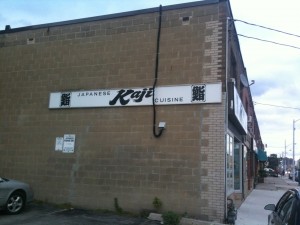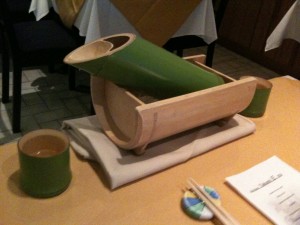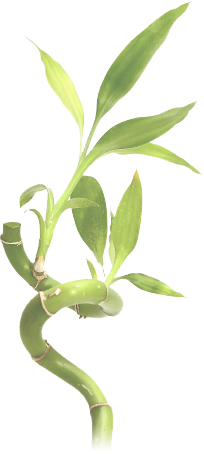More Sake in Toronto
Posted by bmountain | Posted in Restaurants, Sake | Posted on 24-10-2009

- Best Sushi in Canada – believe it or not….
When I scheduled a dinner meeting with friend and client Bill Sweetman in Toronto two weeks ago, I knew the restaurant would be a good one. To call Bill a “foodie would be a complete understatement. Bill prides himself in being up on the best restaurants in Toronto and in a city with so many to choose from, he has a fun job.
When the taxi dropped us off at the restaurant, I immediately thought that Bill’s streak was over. Sushi Kaji is on the Queensway in Etobicoke, part of greater Toronto. The strip mall setting is about as ugly as that style of retail gets and the surrounding eateries include a Baskin Robbins and a Burger King, not the type of place to build you confidence about the meal your going to eat, especially raw seafood.
The interior of Kaji is basic Japanese, clean and minimalist. It’s a fairly small place holding only 30 people and reservations are strongly recommended. We were there on a Tuesday night and within minutes of our arrival the place was packed. The majority of the clientele was Asian which is always a good sign with sushi.
The first thing that struck me was the menu. There are three different dinner menus and each one looked excellent. I chose the Takumi option which included grilled chicken, grilled conch, deep fried burdock cake, sushimi, a mushroom soup, bulb cake stuffed with sea urchin, grilled black cod, sushi, and green tea ice cream for desert. I’ve had a lot of great Japanese food but this was right up there with anything I’ve ever experienced. Each course was prepared to perfection and the presentation was a thing of beauty. Interestingly Kaji imports all their fish and vegetables from Japan and they must use fast transit because everything was fresh and amazing. The coup de grace was the gold leaf on the sushi which I’ve never had before.
 More impressive than the food though was the sake. The sake list was impressive with a number that I hadn’t had before. We started with an Otokoyama Junmai from the Hokkaido region of Japan. The sake was server in a chilled green porcelain bamboo container with matching glasses, a nice touch and I’m definitely going to try to find a set like that for home.
More impressive than the food though was the sake. The sake list was impressive with a number that I hadn’t had before. We started with an Otokoyama Junmai from the Hokkaido region of Japan. The sake was server in a chilled green porcelain bamboo container with matching glasses, a nice touch and I’m definitely going to try to find a set like that for home.
There is some darn fine sake being made on the island of Hokkaido, Japan’s northernmost island. Here the snows blow in from the Sea of Japan, and fall heavy and deep after a short, brilliant Autumn. Temperatures regularly drop below zero, and like many places in the extreme north, the seas often freeze solid for extended periods of time. Hokkaido also has rugged, mountainous terrain springing up inland from its coastal plains which captures and holds the snowfall, channeling it deep underground where it is naturally filtered, and from where it often emerges as natural mountain springs.
One of the most famous of these springs is the Shikomimizo spring that emerges from Mt. Taisetsu near the town of Asahikawa. And from this spring water, a sake brewery named Otokoyama (literally translated as “Man’s Mountain”) has been making sake for more than 340 years. Apparently it was the drink of choice for the Shoguns of the Tokugawa family in Japan’s Edo period. It is certainly old enough and famous enough to have been featured in several of the ancient woodblock paintings by artist Utamaro who showed a dual affinity for beautiful women and alcoholic beverages, especially sake.
Otokoyama is now one of Japan’s largest sake producers, and like many of the other larger breweries, they offer a a dizzyingly complex array of products, very few of which ever make it to the US. I believe Otokoyama exports five sakes, of which this is their finest. It is made from Yamada Nishiki rice, the favored sake rice grown in the Hyogo prefecture which for all intents and purposes is the heartland of sake production in Japan. The Hyogo town of Itami was the most famous sake town in Japan’s history and many sake making dynasties, including Otokoyama’s had their origins in Itami.
Tasting Notes:
Completely colorless in the glass this sake has a classically daiginjo floral nose with hints of jasmine tea and just the tiniest hints of fresh pink bubblegum. In the mouth it is smooth and extremely silky in texture with lovely acidity and a floral, rainwater quality that makes for an incredibly clean experience on the palate. Effortless and ethereal are two words that come to mind.
Food Pairing:
With a sake this delicate, it is easy to overwhelm it with strong flavors. I recommend it either sipped on its own, or paired with light dishes such as seaweed salad or cold tofu with ginger and soy sauce.
We then switched to a Tamanohikari Omachi Junmai Daiginjo from Kyoto Japan. This sake is produced by the Tamanohikari Shuzo brewery in Kyoto Japan. It uses the Bizen Omachi rice which is an ancient and uncommon strain and gives it a unique and delicate flavor. Bill and I were both floored by this sake. The sake meter value is +3.5 and it tasted dry but not overly so. A very pleasant experience. I actually couldn’t find a lot about this brewery on-line other than translated, it means “Brilliant Jade”. This sake is going on my favorites list though
Sushi Kaji Restaurant
http://www.sushikaji.com
860 The Queensway
Etobicoke, Ontario M8Z 1N7
TEL:416-252-2166
Sake review on Otokoyama by Vinography.com, http://www.vinography.com/archives/2006/08/otokoyama_daiginjo_sake_hokkai.html



Was that Otokoyama their Tokubetsu Junmai? That’s one of my favorites. I’m usually not a fan of drier sakes, but I am quite fond of this one. So smooth and clean! I’m including it in a tasting that I’m organizing next week, so I appreciate your pairing suggestions.
Hey Bob,
What liquor stores support the sake habbit in our neck of the woods?